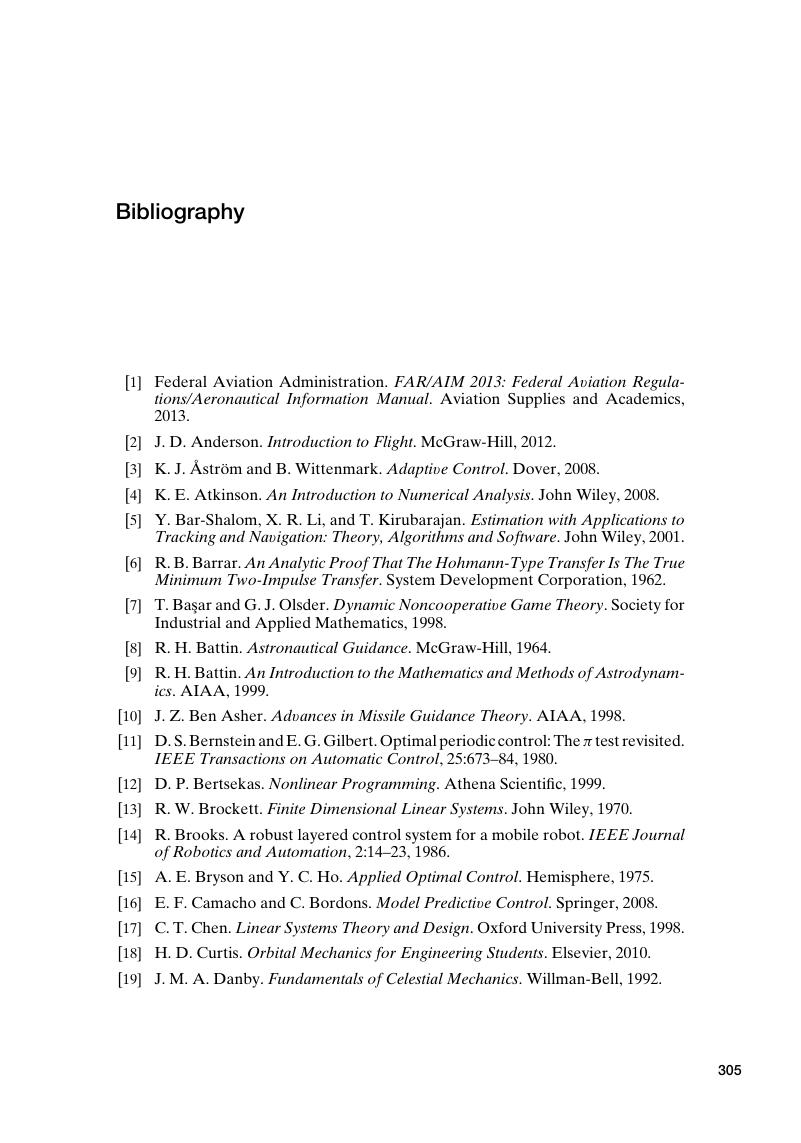Book contents
- Frontmatter
- Dedication
- Contents
- Preface
- 1 Introduction
- 2 Deterministic Systems Theory
- 3 Stochastic Systems Theory
- 4 Navigation
- 5 Homing Guidance
- 6 Ballistic Guidance
- 7 Midcourse Guidance
- 8 Optimization
- 9 Optimal Guidance
- 10 Introduction to Differential Games
- Epilogue
- APPENDIX A Useful Definitions and Mathematical Results
- Bibliography
- Index
- References
Bibliography
Published online by Cambridge University Press: 05 October 2014
- Frontmatter
- Dedication
- Contents
- Preface
- 1 Introduction
- 2 Deterministic Systems Theory
- 3 Stochastic Systems Theory
- 4 Navigation
- 5 Homing Guidance
- 6 Ballistic Guidance
- 7 Midcourse Guidance
- 8 Optimization
- 9 Optimal Guidance
- 10 Introduction to Differential Games
- Epilogue
- APPENDIX A Useful Definitions and Mathematical Results
- Bibliography
- Index
- References
Summary

- Type
- Chapter
- Information
- Fundamentals of Aerospace Navigation and Guidance , pp. 305 - 308Publisher: Cambridge University PressPrint publication year: 2014



